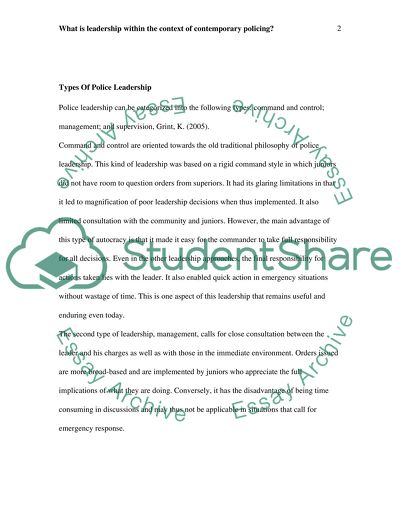Cite this document
(“Police Leadership Essay Example | Topics and Well Written Essays - 3000 words”, n.d.)
Police Leadership Essay Example | Topics and Well Written Essays - 3000 words. Retrieved from https://studentshare.org/sociology/1527776-police-leadership
Police Leadership Essay Example | Topics and Well Written Essays - 3000 words. Retrieved from https://studentshare.org/sociology/1527776-police-leadership
(Police Leadership Essay Example | Topics and Well Written Essays - 3000 Words)
Police Leadership Essay Example | Topics and Well Written Essays - 3000 Words. https://studentshare.org/sociology/1527776-police-leadership.
Police Leadership Essay Example | Topics and Well Written Essays - 3000 Words. https://studentshare.org/sociology/1527776-police-leadership.
“Police Leadership Essay Example | Topics and Well Written Essays - 3000 Words”, n.d. https://studentshare.org/sociology/1527776-police-leadership.


